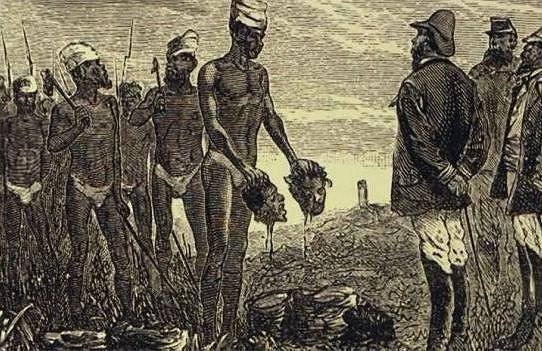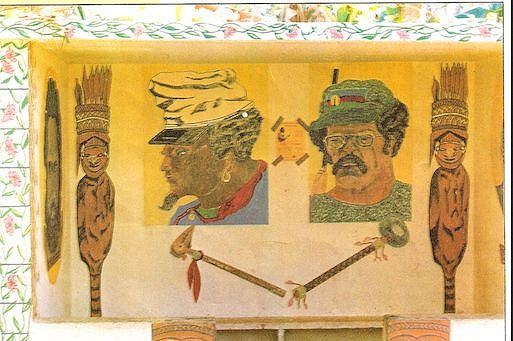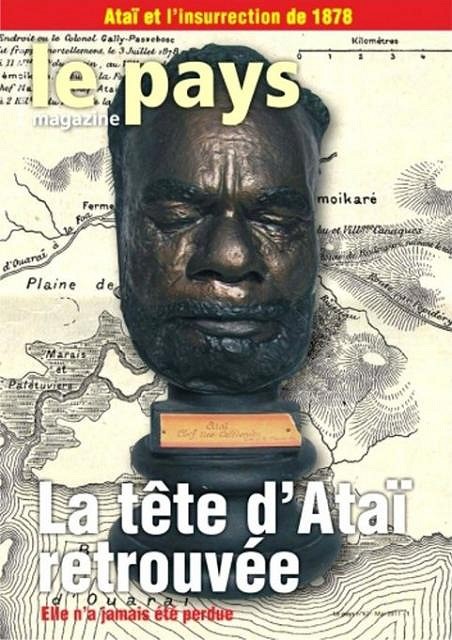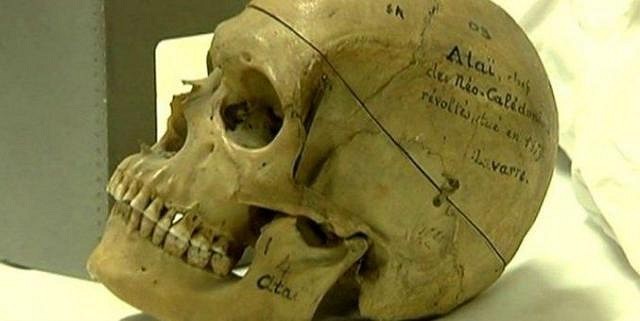Tiki Central / Tiki Travel / Club Nouméa's Parisian Tiki Tour
Post #747541 by Club Nouméa on Tue, Jul 21, 2015 5:53 AM
|
CN
Club Nouméa
Posted
posted
on
Tue, Jul 21, 2015 5:53 AM
The Tale of Chief Atai's Head
Every year in June, the French charity Emmaüs holds its annual bric-à-brac fair at the Expo Centre at the Porte de Versailles, on the south-western outskirts of Paris. If you are ever in Paris in June, this is a must-see event: 23,000 m2 of second-hand stuff from around 150 Emmaüs branches from all over France and as far away as England and Ukraine. That Sunday (14 June), I got there fashionably late (1 hour), only to witness various people walking out with all sorts of amazing finds, from an electric guitar, through to 1960s Danish furniture, through to a cool fin de siècle birdcage and a strange dwarf-sized tailor's dummy which, in the right domestic setting, would nonetheless have looked quite striking. In front of me in the queue, one Parisian woman was exclaiming "they're taking all the good stuff!" while another behind me was muttering "there'll be nothing left..." However the event's stock of goodies was far from exhausted even though I was an hour late. I went there with one mission: to find French Pacific stuff. Coming from the other side of the world, I was not going to buy any of the incredible period furniture, the amazing array of clothes that would have taken up too much room in my limited baggage allowance, or indeed any of the very varied but somewhat heavy vintage books on offer along with, among other things, everything from vintage radios through to a whole stand of Chinoiserie items presented by Emmaüs's Niort branch. Alas, although there was a surfeit of African carvings and trinkets on sale, I only found one item from the French Pacific, but it was a striking find: a carving of chief Atai's head, clearly based on this engraving, which is familiar to students of New Caledonian history: " In 1878, Chief Atai led a Kanak rebellion against French authority in New Caledonia. It was the closest any of New Caledonia's indigenous leaders ever came to toppling French rule in what, at that time, was a penal colony to which the French Republic transported its petty criminals and revolutionaries, ranging from pickpockets, burglars and whores, through to revolutionaries like the Communard Louise Michel. Ultimately however, Chief Atai's rebellion failed, and he and his witch-doctor were decapitated and their heads were presented to the victorious French commander:
Subsequently, after being placed on public display in Nouméa, Chief Atai's head was shipped off to Paris in 1879 in a jar filled with formaldehyde, and it was added to the collection of the Trocadero Ethnography Museum. The head was even placed on public display there in 1889; an object of curiosity - the remains of the savage chieftain who had dared to challenge French authority. In 1951, Chief Atai's head was transferred to the Museum of Mankind at the Palais de Chaillot, following which it was supposedly lost for many years. In the 1980s, Kanak claims for independence from France had resurfaced to the point that once again they were openly challenging French authority, and Atai was a major inspiration and role model for them. His image featured prominently in pro-independence iconography, such as this bus shelter at Poindimié, where he is depicted alongside Éloï Machoro, a Kanak leader who was shot by two French gendarme snipers in 1984:
By the late 1980s, the Kanak independence movement retreated from violence and concluded the Matignon Accords with France and local French loyalists, which opened the way to a more peaceful period in its history marking a gradual move towards greater autonomy and ultimately independence which has continued until this decade. Some time between now and 2018, an independence referendum will be held in New Caledonia in order to determine whether it remains part of the French Republic. Since the 1980s, Kanak leaders have been making ever more pointed claims for the return of Chief Atai's head, a particularly painful reminder of French humiliation. For years, various Parisian officials insisted that the head had been lost, until...
In 2011, a researcher at the Museum of Mankind in Paris revealed that Atai's skull was sitting in a cupboard on the premises:
After 3 years of lobbying by descendants from his tribe, the skull was eventually officially returned to New Caledonia in September 2014, with all due ceremony, by the French Minister of Overseas Territories, thereby closing one of the most inglorious chapters in French colonial history.
[ Edited by: Club Nouméa 2015-07-21 06:04 ] |


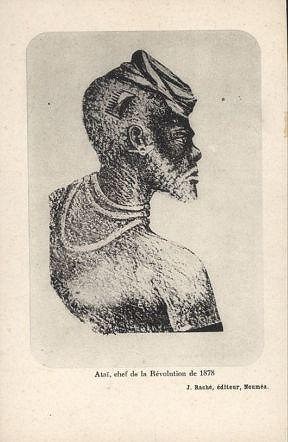 "Who's he?" you may very well ask.
"Who's he?" you may very well ask.